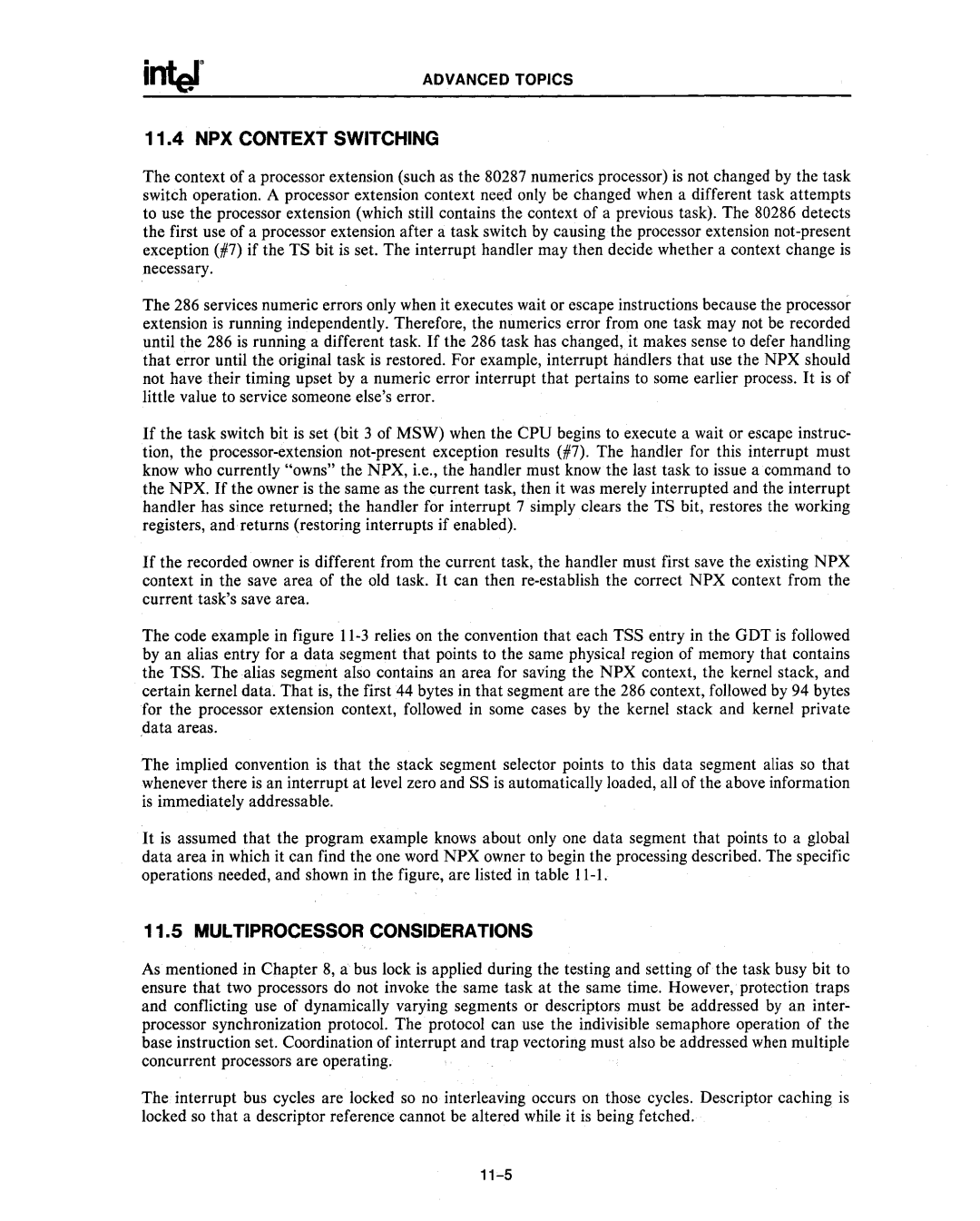
ADVANCED TOPICS
11.4 NPX CONTEXT SWITCHING
The context of a processor extension (such as the 80287 numerics processor) is not changed by the task switch operation. A processor extension context need only be changed when a different task attempts to use the processor extension (which still contains the context of a previous task). The 80286 detects the first use of a processor extension after a task switch by causing the processor extension
The 286 services numeric errors only when it executes wait or escape instructions because the processor extension is running independently. Therefore, the numerics error from one task may not be recorded until the 286 is running a different task. If the 286 task has changed, it makes sense to defer handling that error until the original task is restored. For example, interrupt handlers that use the NPX should not have their timing upset by a numeric error interrupt that pertains to some earlier process. It is of little value to service someone else's error.
If the task switch bit is set (bit 3 of MSW) when the CPU begins to execute a wait or escape instruc- tion, the
If the recorded owner is different from the current task, the handler must first save the existing NPX context in the save area of the old task. It can then
The code example in figure
The implied convention is that the stack segment selector points to this data segment alias so that whenever there is an interrupt at level zero and SS is automatically loaded, all of the above information is immediately addressable.
It is assumed that the program example knows about only one data segment that points to a global data area in which it can find the one word NPX owner to begin the processing described. The specific operations needed, and shown in the figure, are listed in table
11.5 MULTIPROCESSOR CONSIDERATIONS
As mentioned in Chapter 8, a bus lock is applied during the testing and setting of the task busy bit to ensure that two processors do not invoke the same task at the same time. However, protection traps and conflicting use of dynamically varying segments or descriptors must be addressed by an inter- processor synchronization protocol. The protocol can use the indivisible semaphore operation of the base instruction set. Coordination of interrupt and trap vectoring must also be addressed when multiple concurrent processors are operating.
The. interrupt bus cycles are locked so no interleaving occurs on those cycles. Descriptor caching is locked so that a descriptor reference cannot be altered while it is being fetched.
